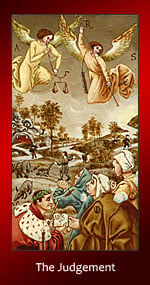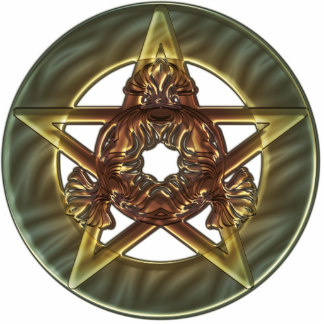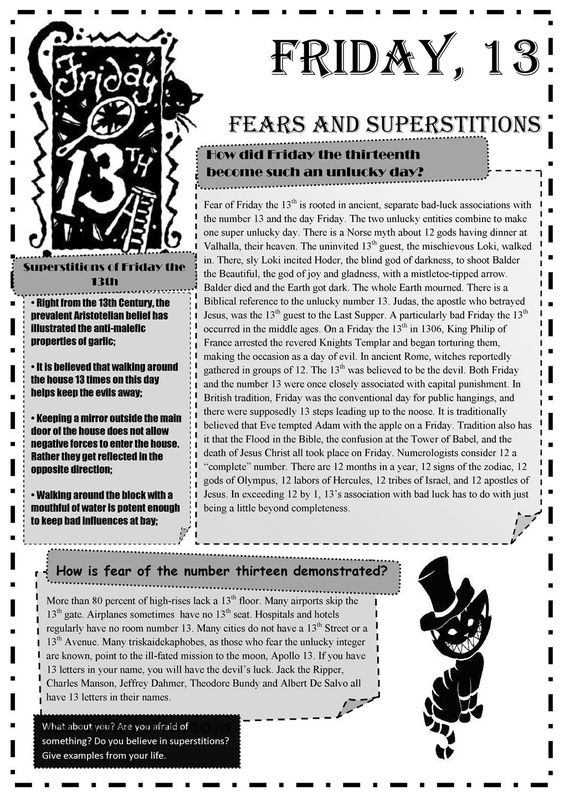
The Witches “Witchy” Journal for Friday the 13th

I’m not nearly as afraid of Friday the 13th as I am of the people who are afraid of Friday the 13th.
—Unknown

Friday: The day of beauty
Frigg was the Norse goddess of beauty, love, household, fertility and motherhood. She was Odin’s wife. She wonderfully balances out the dreadfulness of all the masculine gods sitting around our week table.
Derived from Latin Dies Veneris, Friday is viernes in Spanish, vendredi in French and venerdi in Italian. The day belongs to Venus, the Roman goddess of beauty, love and fertility..

Today is Friday, April 13
Friday is the day of Venus. It takes it name from Frigg, the Goddess of love and transformation. She rules the spiritual side of a person that manifests in the physical. Because of this, Friday is often thought of as dangerously unpredictable. This is expressed in an old East Anglian adage:
Friday’s day will have its trick
The fairest or foulest day of the week.
Deity: Frigg
Zodiac Sign: Taurus/Libra
Planet: Venus
Tree: Apple
Herb: Vervain
Stone: Sapphire/Chrsolite
Animal: Bull/Serpent
Element: Earth
Color: Yellow/Violet
Number: 7
Rune: Peorth(P)
The Celtic Tree Month of Fearn(Alder)(March 18 – April 14)
Runic Half Month of Ehwaz(horse) (March 30 – April 13)
Goddess of the Month of Columbina (March 20 – April 17)
Source
The Pagan Book of Days
Nigel Pennick

The Goddess Book of Days for April 13
Karno-Tama-Yori-Hime in Japan, the sacred fertility marriage of God O-yama- kui-no-kami and Goddess Kamo-tama-yori-hime, resulting in the birth of the child Kami. Dedicated to Goddesses of Birth and Fertility (Demeter, Yemaya, Kwan Yin, Isis, Spider Woman, Tonantzin, Carmen, Mawu, Erzulie, Aphrodite, Ishtar, Astoreth, Sheela, Mary).\
The Goddess Book of Days
Diane Stein

Goddesses Associated With Friday
Friday For Freya: Astarte, Aphrodite, Erzulie, Aida Wooo, Eve, Venus, Diana, Isis, the Witch of Gaeta, Chalchiuhtlique
Source
The Goddess Book of Days
Diane Stein

On Friday, April 13th, We Celebrate…..
Songkran (Thailand)
TOU MOU
Themes: Cleansing, luck, charity, karma, history
Symbols: Pen (or Quill), books, light
About Tou Mou: The Chinese/Thai goddess of record keeping takes specal notice of our actions (or inactions) today, keeping careful notes for the karmic bank account. In works of art, Tou Mou is depicted sitting behinds books and glowing with the beautiful light of the aurora. It is this brightness that shines on our lives today, revealing both the good and the bad. Suitable offerings for this goddess include rice, fruit, and all acts of goodness.
To Do Today: In Thailand, this water festival begins with tossing water down the street to chase away evil influences. I suggest using your driveway instead, or a glass of water on the kitchen floor that is judiciously mopped up later.
People in Thailand traditionally wash their parents’ hands with scented water today to bring them honor and long life. So remember your elders today, and do something nice for them—it’s good karma, and it definitely catches Tou Mou’s attention. Another activity extends good deeds to the natural world—that of freeing sonbirds, who then bear their liberator’s prayers directly to Tou Mou’s ear. You might want to simply scatter some birdseed instead for similar results.
Finally, it might be a good day to balance your checkbook to make sure your financial karma stays in good standing. Burn a green candle nearby for prosperity.
Source
365 Goddess, A Daily Guide to the magic and Inspiration to the Goddess
Patricia Telesco

Friday’s Conjuring
Friday – is associated with Venus
Candle colors – Green, Red, Blue, White, Purple
Spellwork – Love, Marriage, Money, Attraction, Luck, Healing, Prosperity, Change, Road Opening work, Bring Peace, Relationships, Power and Success
—Old Style Conjure Wisdoms, Workings and Remedies
Starr Casas

Ritual Influences for Friday, April 13
Friday Venus
Perfumes: Stephanotis, Apple Blossom, Musk, Ambergris
Incense: Saffron, Verbena
Wood: Myrtle
Color: Light Blue, Pale Green
Influences: All Love Matters, Friendships, Affection, Partnerships, Money, Sex
Reference
A Book of Pagan Rituals
Herman Slater

Friday–The Day of Freya
In the stories of the gods and goddesses of the Angles and Saxons we find two goddesses, Frigga, the wife of Odin and queen of the gods, and Freya, the Goddess of Love. Some people think that Friday was named after Frigga, and others that it was Freya’s day. Since very similar stories are told of each of them, it is quite probable that they were really the same person. The Roman name for the day was Dies Veneris, the day of Venus, who, it will be remembered, was the Goddess of Love, and so corresponded to Freya. The modern French name is taken from the Latin and is vendredi.
Frigga was the Goddess of the Clouds, and, when she was not with her husband Odin, spent her time in spinning clouds. Her spinning-wheel was studded with jewels, and at night could be seen in the sky as the constellation to which the Romans gave the name of Orion’s Belt, as we have seen in the story of Orion.
Frigga was also the Goddess of Spring, and as such was known as Eastre, whom we have already mentioned as giving us the word Easter.
Freya, the Goddess of Love and Beauty, like the Venus of the Romans, received a great welcome when she came to the home of the gods, and was given a special kingdom called Folk Meadow, where was a vast hall known as the Hall of Many Seats. Here she received half of those slain in battle, the other half being entertained by Odin, as we have seen.
Freya is depicted as having blue eyes and golden hair, and often as wearing a robe of feathers, which enabled her to fly through the air like a bird.
The goddess is said to have married Odur, who was probably Odin under another name. Odur once had occasion to leave Freya and travel over the world, and the goddess was broken-hearted at his departure. Her tears fell among the rocks and were changed to gold, while some which fell into the sea were transformed into amber. All nature mourned with her: the trees shed their leaves, the grass withered, and the flowers drooped their heads. At last Freya in her distress set out to find her husband, and, passing through many lands, where her golden tears were afterwards found, came to the sunny south, and there overtook the wandering Odur. As the lovers returned, the fields and the flowers rejoiced with them. The frost and snow fled before them, and the earth became green again as they passed.
“And Freya next came nigh, with golden tears;
The loveliest Goddess she in Heaven, by all
Most honour’d after Frea, Odin’s wife.
Her long ago the wandering Odur took
To mate, but left her to roam distant lands;
Since then she seeks him, and weeps tears of gold.”
MATTHEW ARNOLD–Balder Dead.
This story, of course, reminds us of Ceres and Persephone, and is only another fanciful explanation of summer and winter.
Freya was the proud possessor of a dazzling necklace of gold, which had been made by the dwarfs, and which she wore night and day. On one occasion only did she lend the necklace, when Thor, disguised as Freya, went to the land of the giants to recover his hammer, which had been stolen by the Giant Thrym. Loki, by borrowing Freya’s robe of feathers and flying over the country of the giants, had discovered the thief, but had also found that Thrym would only return the hammer on condition that Freya would become his wife. When Freya heard of the giant’s presumption, she became greatly enraged, and vowed that she would never leave her beloved Odur and go to live in that dreary and desolate land of cold. Heimdall, the guardian of the bridge Bifrost, then suggested that Thor should go to Thrym disguised as Freya, in company with Loki disguised as Freya’s attendant. The gods at last allowed themselves to be persuaded, and Thor, having borrowed Freya’s clothes and necklace and wearing a thick veil, set out with Loki, who was dressed as a handmaiden. On reaching the giant’s palace, they were welcomed by Thrym, who was delighted at the success of his plan, and who led them to the banqueting hall, where a great feast was held. At the end of the feast, Thrym ordered the famous hammer to be brought in, and he himself laid it in his bride’s lap as a marriage gift. Thor’s hand immediately closed over the hammer, and in a few moments Thrym and all the guests invited to the wedding feast lay dead.
Freya was greatly relieved to have her necklace returned in safety, but the evil Loki, attracted by its wonderful beauty, determined to steal it. One night the god, by changing himself into a fly, succeeded in entering Freya’s palace. He then resumed his own shape, and, creeping stealthily to Freya’s bed, gently removed the necklace from the goddess’s neck. The watchful Heimdall, however, had heard Loki’s footsteps, and, looking in the direction of the Folk Meadow, became a witness of the theft. He at once set off in pursuit of Loki, and, overtaking him, drew his sword and was about to kill the thief, when Loki changed himself into a flame. Heimdall immediately changed himself into a cloud, and sent down a shower of rain to put out the fire. Loki then took the form of a bear, and opened his mouth to catch the water. Heimdall also took the form of a bear and attacked Loki, who, finding that he was being overpowered, changed himself yet again, into a seal. Heimdall followed suit, and fought again with Loki, and at length compelled him to give up the necklace, which was returned to Freya.
On another occasion Freya was sought by one of the giants, and it was only by the cunning of Loki and by an act of bad faith on the part of the gods that she was saved. The gods, ever anxious lest the giants should invade Asgard, decided to build a stronghold which would prove impregnable. They received an offer from a stranger, who was willing to undertake the work in return for the sun, the moon, and the goddess Freya. By Loki’s advice they accepted the offer on condition that he should complete the work in one winter, aided only by his horse. To the surprise of the gods the stranger agreed to these conditions, and with the help of his horse, which could haul the heaviest stone, set to work. The gods, who at first felt sure that their conditions had made the task impossible, were alarmed to find as time went on that the stranger was working so quickly that it seemed certain that he would be able to keep his promise. The gods on their side had no intention whatever of keeping their promise, since they could not possibly part with the sun and the moon and the Goddess of Love, and they angrily pointed out to Loki that since it was he who had got them into this difficulty, he must find some way out of it. Loki replied that the gods need have no fear, for with his usual cunning he had thought of a plan whereby the stranger might be made to forfeit his reward. On the last day, when only one stone remained to be dragged into position, Loki changed himself into a horse, and, trotting out from the forest, neighed loudly to attract the attention of the stranger’s horse. Tired of his continual labour and longing for freedom and rest, the horse broke free from its load and galloped after Loki. The stranger, after pursuing it vainly through the forest, at last made his way to Asgard, and, full of anger at the trick which had been played upon him, took on his real shape, for he was a frost-giant, and was about to attack the gods when Thor hurled his hammer at him and killed him.
Frey, the god mentioned in the story of Loki and Sif’s golden hair, was Freya’s brother. He was the God of the Fields, and sacrifices were made to him for the crops. In the early spring his wooden image was driven in a chariot through the countryside, in order that he might bless the fields and bring a fruitful harvest: Frey, as we have seen, became the possessor of a ship which could travel over land and sea, and though large enough to contain all the gods, yet could be folded up like a cloth, and he also possessed a boar with golden bristles. The god often rode on this boar, which was swifter than a horse, and was no doubt a symbol of the sun, which ripened the crops. We find the same idea of sunshine in Frey’s flashing sword, which fought of its own accord as soon as it was drawn from its sheath.
The month of the Angles and Saxons which begins just before our Christmas was sacred to both Frey and Thor, and it was customary at that time, as we have already mentioned, to bind a huge wooden wheel with straw, and, setting fire to it, to roll it down a hill. The wheel was a symbol of the sun, which at that time began to chase away the winter. At this time, too, was held a great feast to all the gods, and the chief meat eaten was a boar’s head, in honour of Frey. The missionaries who first brought Christianity to the Northmen, finding this feast was of great importance and was celebrated by all the people, did not try to do away with it. Instead, they changed it from a heathen to a Christian festival by putting Christ in the place of the Norse gods, and calling it the Feast or Mass of Christ. A similar change was made, it will be remembered, in the case of the Easter festival, held in honour of Eastre or Frigga, the wife of Odin.

The Witches Guide to Friday
Freya’s Day
Ruler: Freya, Venus
Colors: Emerald green or pink
Power Hours: Sunrise and the 8th, 16th, and 24th hours following.
Key Words: Love, money, health
It is easy to spot the ruler of this day by its name. In the word Friday, we see the roots of the name of the Norse goddess Freya, a goddess of love and fertility, and the most beautiful and propitious of the goddesses thus the verse “Friday’s child is loving and giving.”
In Spanish this day of the week is called Viernes and is derived from the goddess Venus. Matters of love, human interaction, the fluidity of communication, sewing and the creation of artistic garments, household improvement, shopping, and party planning all fall under the aspects of Friday and its ruling planet, Venus.
Friday’s angels are Ariel/Uriel, Rachiel, and Sachiel. Rachiel also concerns himself with human sexuality and is a presiding spirit of the planet Venus.
On Fridays, the hour of sunrise and every eight hours after that are also ruled by Venus, and that makes these times of the day doubly blessed. These four hours are the strongest four hours for conducting ritual.
Check the local newspaper, astrological calendar, or almanac to determine your local sunrise.
Source
Gypsy Magic

FRIDAY CORRESPONDENCES
Venus/Water/East/West/South/Dawn/Female/Libra/Taurus
Magickal Intentions: Love, Romance, Marriage, Sexual Matters, Physical Beauty, Friendship and Partnerships, Strangers, Heart
Color: aqua, blue, light blue, brown, green, pale green, magenta, peach, pink, rose, white, all pastels
Number: 5, 6
Metal: copper
Charm: green or white garments, scepter
Stone: alexandrite, amethyst, coral, diamond, emerald, jade, jet, black moonstone, peridot, smoky quartz, tiger’s-eye, pink tourmaline
Animal: camel, dove, elephant, goat, horse, pigeon, sparrow
Plant: apple, birch, cherry, clematis, clove, coriander, heather, hemlock, hibiscus, ivy, lotus, moss, myrtle, oats, pepperwort, peppermint, pinecone, quince, raspberry, rose, pink rose, red rose, rose hips, saffron, sage, savin, stephanotis, strawberry, thyme, vanilla, verbena, violet, water lily, yarrow, and all flowers
Incense: ambergris, camphor, mace, musk, myrrh, rose, saffron, sage, sandalwood, sweetgrass, vanilla, violet, all floral scents
Goddess: Aphrodite, Asherah, Baalith, Brigid, Erzulie, Freya (Passionate Queen), Frigg, Gefion, Harbor (Beautiful One), Hestia, Inanna, Ishtar (Lady of Passion and Desire), Lakshmi, Lilith, Mokosh, Nehalennia, Nerthus, Ostara, Pombagira, Sarasvati, Shakti, Shekinah, Sirtur, Al Uzza, Venus (Queen of Pleasure), Vesta
God: Allah, Bacchus, Bes, Cupid, the Dagda, Dionysus, El, Eros (God of Love), Freyr, Frit Ailek, Shukra
Evocation: Agrat Bat Mahalat, Anael, Hagiel, Mokosba, Rasbid, Sachiel, Uriel, Velas
Courtesy of Moonlight Musings

Friday Is Ruled By Venus
Friday belongs to Venus, both the planet and its namesake Roman goddess of love. This day is sacred to many other gods and goddesses of love such as Eros, Venus, Aphrodite, and the Norse goddess that gave the day its name, Freya. This day of the week is for magical topics such as love, birth, fertility, and romance. Colors for today include pink and aqua.
Some suggestions for Friday enchantments would include:
Carrying a rose quartz with you today to send out some gentle and loving vibes to those crabby co-workers
Working a loving Tarot spell to charm a friend’s pregnancy with good health and safety
Working a little flower magic to enchant a single pink rose for friendship and inner beauty, and setting it on your desk. Or try empowering a red rose for passion and placing it in your bedroom
Burning rose-scented candles to encourage the same effect. Call on Eros to “bring a passion for life” to your days.
Sharing a romantic snack with your partner. Feed each other ripe, red strawberries. Those strawberries are love-inducing food, and are sacred to many love goddesses, including today’s patroness, Freya.

The Energy of Venus
Weekday ruled by Venus: Friday
Stones:
Rose quartz
Moonstone
Pink tourmaline
Peridot
Emerald
Jade
Herbs and Plants:
Pink rose
Ivy
Birch
Heather
Clematis
Sage
Violet
Waterlily
Magickal intentions: Love, romance, marriage, sexual matters, physical beauty, friendship and partnerships, strangers and heart matters.

SIMPLE SPELLS FOR GOOD LUCK
In life it can sometimes seem that everyone else around us gets all of the luck! Whether it be always revealing the winning numbers on a scratch card, or constantly being in the right place at the right time, you might ask yourself “why is it never me?”!
It’s time to start welcoming more good luck into your life! There are many spells you can do to create good fortune. Yes! Spells really can be used to bring you more luck.
Spells have been used by people all over the world for many, many years with plenty of good results, but, of course, we do not guarantee that a spell will always work. Spells can take their time to produce results, and the outcomes will vary from person to person. Remember, a good luck spell will bring to you what is truly best for you, and that may come in unexpected ways! When performing a spell, remember to keep an open mind and look out for any opportunities and signs in the future.
Good luck!!
A Penny for Good Luck
This is one of the oldest, most simple spells you can perform for luck, and all you need is a penny!
When you are out and about, carry the penny in your pocket. When you feel ready, hold the penny in your hand and raise your hand towards your heart. This will help capture energy from your soul. Next, hold the penny to your third eye point (this is at your forehead, between your eyes) and say to yourself, out loud if you can, “penny for luck!” Kiss the hand in which you are holding the penny and leave it behind somewhere, such as a fountain or in a bed of flowers. You are done! Walk away from the penny and don’t look back.
The magical thing about this spell is that not only will it welcome luck into your own life, but for the person who finds the penny too! This is why you should always pick up a penny should you find one. Remember the phrase “find a penny, pick it up, for the rest of the day you’ll have good luck”?
The Full Moon Spell
The spell uses the extra powers of the full moon to bring you good luck.
Simply say the words below during the next full moon.
“Lady of luck come out of your hidden course, bless your light upon me as the light of the moon shines above and in the light luck will be bless I, when the moon is next to be full”
Repeat the spell every full moon for good luck!
Wiccan Good Luck Spell
For this good luck spell you will need three candles in orange or gold, frankincense, and a pen and paper. Draw a circle and light the frankincense, then set out the candles in a triangle (don’t light them just yet!).
Next, repeat the following words aloud…
“God and Goddess, Spirits and Guides. Thank you for all that I have. I ask you now for good luck (or replace with what you really want). Aid me as I work to achieve it. Please bring it to me when the time is right. So mote it be”.
Have clear in your mind what it is you want. Focus as deeply and as clearly as you can on feelings of good luck and success, joy and elation. Imagine those feelings of achievement and happiness in your chest. As you focus on these feelings, an image or symbol will eventually appear in your mind. Take note of this and draw it on your paper. Place the piece of paper inside the triangle of candles.
Now it is time to light the candles! As you light each of the three candles, say aloud “fire, ignite my dream, for the highest good”.
Sit for a moment with the candles and visualise good luck in your life.
Finally, you must bury your piece of paper with the drawing in the earth. As you do this, say aloud “Earth, seal my dream, for the highest good.”
Remember, these spells don’t guarantee success. Have fun and open your heart to the possibilities!
Reference
Wishingmoon, Author
Website: WishingMoon

Home & Hearth Magick for Friday, April 13
On Fridays cast for love, luxury, pleasure and entertainment
Planetary Influence: Venus
Household Symbols: A sea shell, a fountain, fresh flowers, your wedding ring or wedding photo, red or pink paper hearts, apples and cherries.
Color: Pink and aqua green
Kitchen Spices: Thyme and sugar
Source:
Cottage Witchery, Natural Magick for Hearth and Home
Ellen Dugan

Celebrating Legends, Folklore & Spirituality 365 Days A Year for April 13th
Thailand Water Festival
April 13 marks the annual three-day festival of water celebrated ebrated by the Buddhists in Thailand. The temples are cleaned and then purified with the smoke of incense. All of the Buddha statues are then ritually bathed, and the water is thrown on those attending the ceremony to “wash away” the evil spirits of the previous year.

Origin of the Fear of Friday 13th
The Knights Templar rose to prominence in Europe between 1096 and 1307. Their downfall came on Friday 13th October 1307. This date saw the catastrophic destruction of the Knights Templar at the hands of King Philip of France and his puppet Pope Clement V. Some say this event, in which the Templars were burnt at the stake, gave birth to the superstition associated with Friday 13th.
One superstition is that if 13 people sit down to dinner together, all will die within the year. One form of this legend dates back to the Norse god of mischief – Loki. The saga tells of Loki gate-crashing a party bringing the number of guests to 13. To cut a long saga short, Balder the good was killed. For this reason Norwegians believe that 13 at a dinner party is bad luck. Friday 13th Trivia
Beware naming your children with 13 letters in their name, they may be cursed for example, Jack the Ripper, Charles Manson.
Warning: count your women because there are precisely 13 witches in a coven.
How many loaves are there in a ‘Baker’s Dozen’? It is superstition that prevents this number be mentioned by name, in fact the extra loaf, presumably the runt of the litter, was baked as a special bribe for the devil not to spoil the batch of loaves.
Sportsmen are notoriously superstitious and many teams avoid using number 13 in their squads. Dan Marino broke most of the quarterback’s records, he fearlessly wore number 13 throughout his career with the Miami Dolphins. However, some say his number was his undoing and is responsible for his epithet, ‘The greatest quarterback never to win a Super Bowl’. Fate played it’s part in Super Bowl XIX, where Dan Marino (13) was beaten by his nemesis Joe Montana who preferred number 16 on his back
In the Bible, Luke’s Gospel Chapter 22, tells us that there were 13 present at the Last Supper. There is evidence that this Last Supper was held on a Friday, and of course this is when Judas Iscariot betrayed Jesus Christ to the Romans.
Some people are so afraid that they refuse to get out of bed, or go to work on Friday 13th. A study in the BMJ [British Medical Journal] in 1993 looked into the relationship between driving and road accidents in the UK on two separate Fridays: the 6th and the 13th. This study was carried out over a period of years. They eventually concluded that, ‘Friday 13th is unlucky for some. The risk of hospital admission as a result of a transport accident may be increased by as much as 52 percent. Staying at home is recommended.

 The Witches Divination Journal for April 13th
The Witches Divination Journal for April 13th












![]()













You must be logged in to post a comment.